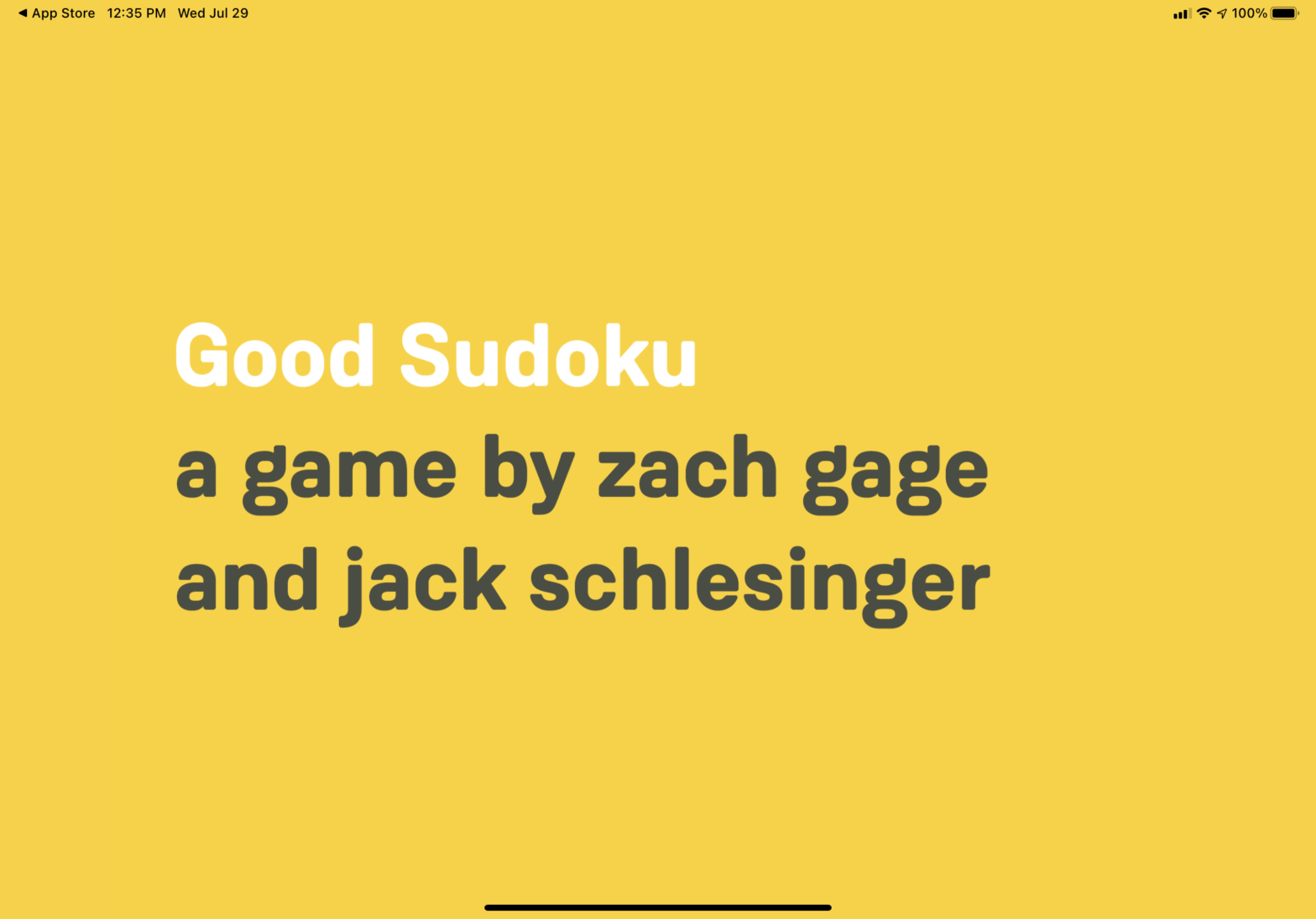Update: I’ve added an addendum with some developer notes to clarify one of the tools I talked about in the review.
I’ve been playing a lot of sudoku on my phone lately.
Aside from derivative anime gacha games, is there another app market that has so many of the same entries? I can’t think of one. There’s a sudoku app for every day of the year, practically, and they all essentially do the same thing: give players number puzzles that look and play like sudoku. On my phone currently, I have six different sudoku apps installed. When I look at my purchase history, I have downloaded or purchased eleven different sudoku apps over time.
My favorite apps are the ones by Cracking the Cryptic, a YouTube channel run by some former world championship sudoku players, as they run the balance (I think) between giving the player some control of the board, teaching the rules of the game, and offering challenging puzzles that can’t just be cracked, excuse the pun. But recently, Zach Gage (Card of Darkness, Really Bad Chess, Flipflop Solitaire) took his penchant for turning up the “game” aspect of classic puzzle games to 11 and applied it to sudoku. His newest app, Good Sudoku, is the product of that work, and I’m here to say… I don’t think it’s actually very good sudoku at all, y’all.
Don’t get me wrong. It’s a good game, I’m enjoying playing it, and like all of Gage’s apps it looks, sounds and feels great. Like the aforementioned Cracking the Cryptic folks, Gage’s Good Sudoku aims to teach new players how to play and offers discoverable tips and hints to players for this reason. I just… I don’t think Good Sudoku is a very good game of sudoku at the end of the day.
The rules of sudoku are pretty simple. You start with a 9×9 grid divided into 3×3 “houses.” Each row, column and house is complete when it has 1 through 9 filled in, but you can’t repeat numbers. Good Sudoku follows these rules easily. But it does something extra that I think puts it in a different category from sudoku: computer-assisted solving.
In two of Good Sudoku’s three game modes (with the default settings turned on), you are not actually solving the puzzle fully yourself. Instead, as you solve for certain numbers, the game’s AI fills other numbers in – sometimes completing entire houses without your input.* (See the update below for words from the developer on how auto-complete works.) You can turn this feature off individually in the “Good” or “Arcade” modes, but the only mode it’s off by default is the “Classic” mode. And like, it sends a little dopamine jolt to my brain to complete houses, rows and columns regardless thanks to the haptic feedback, but this isn’t actually solving a sudoku puzzle unassisted.
Arguably, the other features – like auto-fill notes (basically completing the grid with every possible number that could go into a space and solving backwards) and Recover Board (which takes you back to the move you made that invalidated the solution) – are also ways of “computer-assisted solving,” but are systems that were introduced in other, older sudoku apps. They might be equally invalid in the context of, say, world championship sudoku play, but then again so would the Cracking the Cryptic apps. Really, it’s the AI that gets me here.
Anyway, I’ve played over 50 rounds of sudoku in Good Sudoku and uh, it is still pretty fun to play despite these idle thoughts. It’s out on the iOS App Store for free with a $3.99 upgrade to the full experience.
UPDATE: Zach Gage on the auto-complete feature (and other stuff):
Thanks for the conversation on this!
It’s a genuine pleasure to have you here reading our work. Please consider donating to Black Lives Matter, the NAACP and other local organizations doing anti-racist and anti-police brutality work. If you enjoy the site, follow us on Twitter. If you’d like to read a bunch of work like this, you can check out this book-esque object over at itch.io and the Apple Books store!
Additionally, we now have a Patreon (again) and a Substack newsletter you can sign up for. Doing so supports the site and helps us reach our goal of being able to pay other people to come say hi sometimes.
